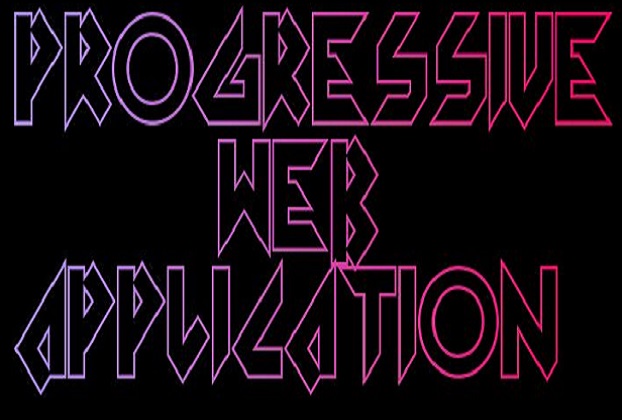Progressive Web Apps (PWA) is a modern way to build applications, including mobile apps, using only web technologies and relying entirely on the proficiency and power of the Web platform. Hence a PWA is a web application that captures the benefits of native and web applications. On account of the lack of these capabilities on the Web platform, PWA has provided the alternate of the mobile apps development and deployment by using the so-called “native” development approaches.
The term Progressive Web Apps was coined by Frances Berriman and Alex Russell in 2015 as the name for the new sort of experience which will utilize the Web Platform to allow it to serve as an innovative technology to achieve the native look-and-feel on mobile devices.
With the passage of time the Web is now back in the mobile development arena with the new, stronger capabilities – in many cases well competing with what the native platforms can offer. And now Progressive Web App model is increasingly deemed as a viable solution for the mobile presence, instead of native apps.
Since 2015, tech mammoths like Microsoft and Google have been paving the way for progressive web apps. And now, PWA is becoming a must-have technology for both giant corporations and small businesses. Google, Twitter, Pinterest, Aliexpress, and Starbucks and many more use progressive web apps to boost their online presence in an effective manner.
Nevertheless, there also seems to exist an ambiguity about what PWA term really constitutes – what does it mean for the application to become one and what changes in terms of the Web Platform’s building blocks. The fact that PWA term was never officially defined by any authority, does not help clearing out this ambiguity. Let’s try to sum up the facts ourselves.
Three must-have traits for PWA
Unfortunately there’s no consensus among the experts, for a web application to be a standard PWA. But an application will be considered as a PWA provided that it is constituted by three integral components:
Service Worker Existence:
Service Worker is simply a program written in JavaScript that runs outside the core app. It enables the broad range of native-app-like features like offline capabilities, background synch or push notifications. In case of network unavailability, if there were no Service Workers the app would be incapable to provide any cool experience, like mentioned before – which is definitely not what the users are used to on mobile devices.
HTTPS Certificate:
In order to keep communication secured over the web HTTPS certificates are becoming an integral part of the web applications of all kinds. Hence the Service Workers, being the extremely powerful component of PWA call for HTTPS certificates for the security and privacy of the content being transferred. Fortunately, the basic certificates are provided free of cost by many vendors, including Amazon Web Services and Let’s Encrypt, so they’re almost always available for free.
Web App Manifest File:
To achieve the most visible native app trait for our web application, we need to provide some metadata, like the app’s name and icon, using the standard JSON file. It is thereby read by the client browser and is used to provide the UI stuff – allowing them to “install” the icon on the home screen. The manifest is also a way to let the system know how much of the browser’s UI to show, via display property and which part of our origin, that is address space should be treated by the system as belonging to our PWA (via scope property).
PWA Vs Web App and Native Mobile App
PWAs support features which are not available for regular websites. It includes push notifications, access to geo-location, offline work, access to local resources like camera, microphone and accelerometer, etc. A PWA can even work outside of a browser, by using a native app that can launch at startup. You can find many more useful features that make the Website more like a native app but using quite little space on the mobile device. A PWA does not require to be downloaded via digital stores like Apple App Store or Google Play. A shortcut of PWA can be added on home screen like other mobile app icons, which provides native app-like access to the users. Last but not the least, PWAs are by far, cheaper and faster to develop than traditional mobile apps.
Below is a quick comparison between PWA and Native applications:
| Features | Native App | Progressive Web App |
| Development Cost | High | Low |
| Development Time | More | Less |
| Offline Functionality | Yes | Yes |
| Cross-Platform Compatibility | No | Yes |
| Indexed by Google | No | Yes |
| Push Notifications | Yes | Yes |
| Home Screen Access | Yes | Yes |
| Download Required | Yes | No |
| Required Update | Yes | No |
| Linkable and Shareable | No | Yes |
Slowly but steadily Progressive Web App is progressing to take its rightful place, nevertheless its not going to replace the current mobile app or web app paradigms. Albeit the term PWA can rather be deemed as a mere buzzword that is going to be obsolete when the practices and technologies that will constitute it become the de facto standards and every website will take advantage of it, one way or the other. This is analogous to what happened with the terms like Web 2.0, AJAX, and Responsive design that disappear (only the terms) after their offerings became the integral part of the web development.
Progressive Web Apps are still a relatively new concept and until it becomes a criterion for the applications to include the offline capabilities and to expect web applications to be ‘installable’ on mobile devices, we need a separate marketing term to publicize this idea. After this happens, it will be obvious to expect from the Web applications to behave as the native mobile app and we’ll be able to refer to PWAs just as normal web apps, or even just apps – since for the end user it doesn’t really matter what kind of technology is behind-the-scene, as long as the app does its job as expected.
In a nutshell, progressive web apps are not supposed to kill native apps in future, they offer huge potential for small and medium size businesses to digitize their businesses for a multitude of compatible devices, with fraction of cost, and with little or no compromise on performance.




